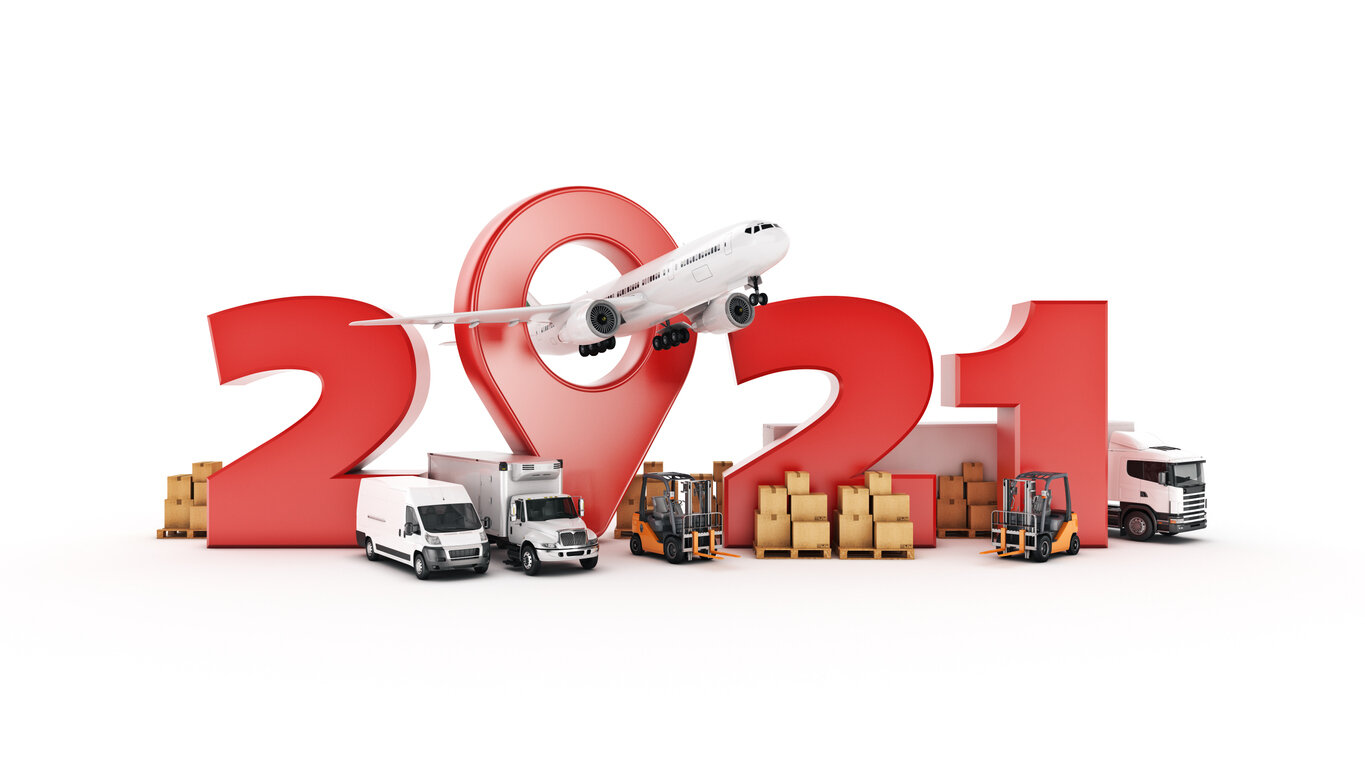This past year a perfect storm of extenuating factors converged on the global supply chain impacting logistics, stifling fulfillment, and leaving the customer high and dry. In fact, as of March 2021, only a paltry 40% of global freight transport actually arrived on schedule marking a dramatic decrease from the previous year.
Given the complexity of even the most local supply chain, the end result leaves the average consumer in a state of bewilderment. When everyday items like household paper products or lumber become scarce —or worse, suffer from hyper-inflated prices— it generates fear, instability, and panic in the general population.
The best way for vendors and logistics professionals to combat supply chain ennui is to understand the anatomy of the global supply chain and the pain points that impact it in order to better plan ahead and provide necessities to the public.
The Anatomy of a Multinational Supply Chain
In the logistics field, we talk a lot about the topic of supply chain management, but what does that term mean to laymen? The average person may have a vague idea of the process that includes a picture of manufacturing, transport, and retail. Still, that version of logistics lacks the nuance that the full picture provides. The global supply chain is vast, and it stretches much further.
It begins with the sourcing of raw materials. This can happen at a single location or across a network of natural resources dependent on the complexity of your company’s finished product. Sourcing raw materials can be time-consuming and labor-intensive, often requiring direct human interaction to complete.
From there, raw materials must be processed into a usable form. This involves complex machinery, techniques, and processes to complete. Take lumber, which must be milled into planks, for example. Once the raw materials have been converted into the proper form, they are then passed on to the manufacturing plant, where the finished product is assembled. In some cases, this is a one-stop process; in others, it requires modular assembly across various manufacturing locations. The printed circuit boards used in everything from microwaves to cellphones are a prime example of compartmentalization. The circuit board is assembled at factory A, then put into the electronic device at factory B. The level of complexity will directly vary depending on the product that you sell.
From there, a vendor will take the finished product and facilitate the sale of the item to your company. Before you take ownership, however, transportation is involved, especially with an international supply chain. While air freight is technically an option, it is very costly. As a result, 90% of global transportation is done by sea.
Once the finished product reaches its destination country, either a new vendor or your company will take ownership of the product. From here, it is dispersed across storefronts and sales channels using over-the-road transportation, warehousing, and logistics before it finally finds its way into the hands of the consumer.
Pinpointing the Breakdown
There is an old saying, “What can go wrong will,” and nowhere has that been more apparent than with the international supply chain this past year. The root problem results from a confluence of factors, including the onset of the COVID-19 pandemic, which served as an industry-wide flashpoint. Together, these factors have created a supply chain primed for breakdown.
The pandemic has had a profound effect on the global workforce, not to mention the international supply chain. Quarantines and social distancing have effectively taken a large chunk of the workforce out of commission, especially those responsible for the procurement of raw materials and those who carry out manufacturing processes.
COVID-19 has also affected consumer demand. During lock-downs, the demand for certain products, like electronics and home renovation supplies, has skyrocketed. Conversely, the demand for items like gasoline and restaurant supplies has plummeted. Supply chains both local and abroad have adjusted themselves to accommodate these sudden shifts in demand, but they have been slow to readjust as the world opens back up. The result? Major in-equivalence between supply and demand.
In turn, fluctuations in the supply chain have created inflation in both the cost of materials and transport costs. According to the previously cited Wall Street Journal article, the cost of transporting a container from China to the United States has increased more than 228% in the last year. At the root of the problem is global commerce’s inability to keep up with rapidly shifting supply chains driven by changing consumer demand. With much of the world emerging from the disastrous wake of the pandemic, seaports are flooded with vendors trying to restock supplies to meet radically surging consumer needs. This has caused the average transport time to double, from 14 days the previous year to 33 days currently.
As if global supply chains weren’t already spread dangerously thin, the stranded container ship, the Ever Given, which was stuck in the Suez Canal for five days in late March, did nothing to help ease global logistics. The Suez Canal is one of the busiest waterways in the world. It links the Mediterranean to the Red Sea, facilitating large volume international trade. The Suez Canal issue exacerbated scarcity across the globe with the effects still ongoing.
Easing Your Supply Chain Woes
2020, and the first half of 2021, truly served as the perfect storm, disrupting the global supply chain in a widespread and devastating fashion. Future-proofing against such immense international factors is difficult, but there are some simple steps that your organization can take to prepare for the next global supply chain calamity. The first step involves leveraging your technological assets, such as your CRM, WMS, and ERP, to your benefit. Integrated systems help to give you a birds-eye view of your entire supply chain, helping you to pinpoint problems along the continuum much quicker.
Secondly, your organization should always work proactively to forge new business partnerships and build out alternative vendors, suppliers, and transportation options. While there is no quick panacea available when it comes to balancing out the wobbly state of the global supply chain, best practices are key. For more help fostering a healthy, solvent supply chain in the post-COVID era, please follow Symbia Logistics today.





